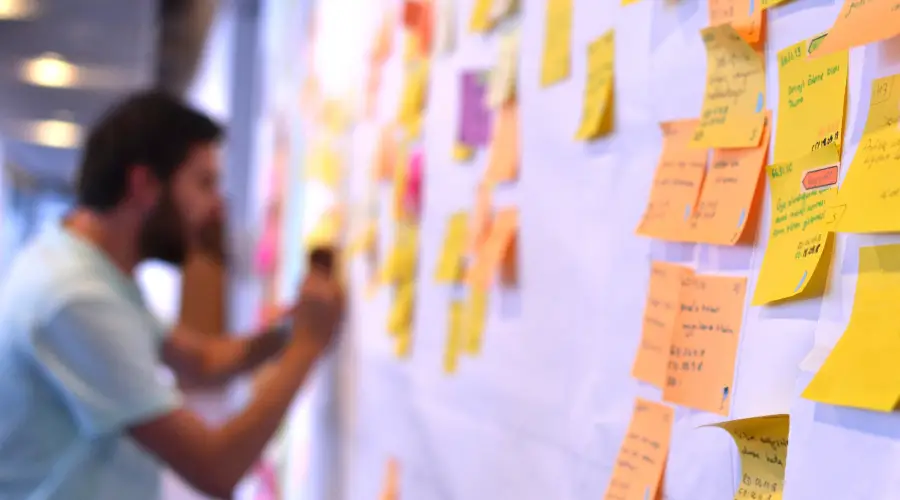It’s almost too annoying simple.
Leave 3 minutes at the end of each session for people to give you some real-time feedback on that meeting.
Attention is one of the most precious resources we have at work. Honour it by seeking to improve your use of it.
Make giving feedback easy. Make it a habit.
Here are the three questions to ask:
- From 1-10, how hugely valuable was this meeting?
Get some numbers to improve on. The strongly positive and informal language in this first question is deliberate. We don’t want people to sit on the fence. - What was the most useful thing that happened?
Find out what people actually valued most — it might be different from what you valued or even what you thought the meeting was about. - What would improve this meeting this time / another time?
his is a neat collection pot for any frustrations. Use this to make changes. Acknowledge aloud those frustrations that can’t be easily changed within the meeting, or where people have different needs and expectations.
Collect your feedback in the easiest way possible
Looking for the lowest friction way to try this? Have people drop answers in the chat box (or in a Team/Slack channel) while you wait. Put them in a spreadsheet or just take a screenshot.
Want to be more structured or make it anonymous? Create a questionnaire.
It doesn’t matter how you ask as long as the process of asking doesn’t feel too onerous.
Reading about this technique is simple. Doing it is harder.
“Let’s not open that can of worms. We all did our best. Of course I would have run it better if I’d had more time to think! There’s no time, let’s just move on to the next meeting.”
People are generally honest, constructive and supportive.
Here’s how you might introduce it.
At the start of the meeting, tee it up. “Before we leave the session today, I’m going to ask you to give me some real time feedback on how it went.”
When the time comes, position the ‘what’s in it for me’: “Please could you help me get the best possible use of our time by giving me your thoughts on today before you leave? There are three quick questions. Here they come.”
Have the questions or the link ready to copy and paste into the chat. Appreciate people’s contributions but don’t respond to anything directly there and then.
Challenge yourself to do this in every meeting you lead for one week.
You will be amazed at what you learn and what changes. This act of feedback is also one of self reflection – one of the most powerful things we can do as a team.
Want to learn more?
This is just one technique of many in the FewerFasterBolder meetings method — where we work with smart tools and human nature to bring precision and humanity to every meeting.
Join Dr Carrie Goucher in our online workshop on 23rd February.
Related blogs
- 5 Really Simple Ways to Improve Any Meeting You Run — another blog by Dr Carrie Goucher, with five simple ideas to make your meetings more purposeful, more honest and easier to follow
- How Many of These Mistakes Do You Make In Your Online Meetings? — Dr Judy Rees gives five common mistakes that people make in online meetings, and how to avoid them.
- Making Your Microsoft Teams Meetings Interactive With Breakout Rooms — Breakout rooms enable you to create virtual rooms of smaller groups, which are ideal for discussion and allowing everyone to have their voice heard. Find out how in this blog by Sal and Ebe.






















